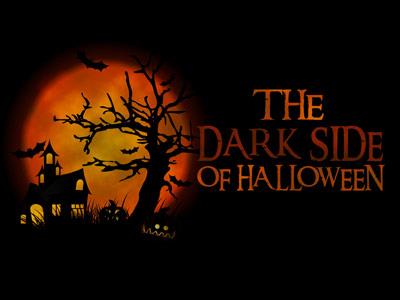-
Where Did Halloween Come From
Contributed by Coz Von on Dec 23, 2019 (message contributor)
Summary: Many things I never knew
Where did Halloween come from? Do other cultures celebrate the tradition? Does it tell us anything meaningful about life after death?
The Celts, a people who inhabited extensive regions of Europe and the British Isles, had a colorful festival, called Samhain, to honor their dead. These festivities were celebrated at the end of October and beginning of November and marked the beginning of winter.
The Celts believed that on the night of October 31, the spirits of the dead came back to visit their earthly homes. To please the spirits of loved ones and to keep bad spirits away, the Celts would leave food or sweets outside of their dwellings, a tradition that gave way to what is called trick-or-treating today, in which children go from house to house asking for candy.
When Roman Catholicism came into contact with the Celts, an effort was made to fuse the festival traditions. That is how November 1 became All Saints Day, a day to honor the dead. The night of October 31, eve of All Saints Day, was called Allhallows eve, from whence is derived the word Halloween. But the original belief of the Celts was not lost. The night of October 31 is still full of magic, witches, and ghosts. In North American homes, we still see decorations of pumpkins, witches, skeletons, ghosts, and black cats. And many people still wear costumes and go trick-or-treating, or they get together to watch a horror movie.
Latin American tradition
Ethnic groups of the New World also preserve similar practices of honoring the dead. Among Mexicans, these festivals are a mixture of indigenous Aztec and Hispanic culture. The Aztecs offered food and clothing to their dead and sacrificed young girls, young men, and slaves to accompany them on the journey to the next world. Each year, during the ninth month (between July 12 and 31), they celebrated a feast for dead children. The following month (from August 1 to 20), it was the adults’ turn. The feast included ceremonies at their temples, with the participants’ faces painted black. These celebrations were accompanied by mournful funeral songs.
After the Spaniards conquered the Aztecs, Catholic missionaries did the same with Aztec festivals as they had done with the Celtic. They instituted the celebration of All Saints Day, during which they presented offerings to the dead on the first and second days of November.
I used to celebrate these rites and preparations. Each year, toward the end of October, my mother would prepare to honor our dead according to Mexican tradition. She would assemble crepe paper, wire, and wax—materials with which to make paper flowers. She would make white flowers for adults and pink flowers for children, wax them, and fastened them to wire hoops. On November 1 and 2—the first dedicated to children and the second to adults—we would place these floral offerings on the graves or hang them from the crosses of our loved ones. Besides the floral offering, we also would build an altar in our home, which we decorated with flowering branches from a tree called “all saints” and with the traditional “flowers of the dead,” in Aztec, cempoalxóchitl, or marigolds. In the center of the altar, we would place food and other objects that had been treasured by the dead person. All of this was surrounded by lighted candles.
The state of the dead according to the Bible
How moving and yet how useless were all of these efforts to please our dead loved ones. Human beings find totally inconceivable the idea that death is the end of everything. The subject of death is so challenging that it becomes a central issue for theology. As a result, many theologians say that a religion can be measured by its teachings about death.
In truth, we were created to live. The Bible states that God has “set eternity in the hearts of men.”1 In other words, hope for eternity is instinctive. That is why, even though mistaken, the Egyptians, like the Aztecs, attempted to aid their dead in a successful journey into the beyond. The Greeks believed that when someone died, his conscious soul was liberated from the prison of his body. Others believe in reincarnation. In short, most cultures assume that there is more than just the short life we live on this earth. There must be some remedy for death and dying, isn’t there? But what is it? Who has it?
Only He who has the absolute truth, the Spirit of God, can help us understand this mystery. Everything begins with Creation. According to the book of Genesis, God made a human figure out of the dust of the earth, and then breathed into his nostrils the breath of life. This union of matter and breath is a living soul.
Adam, the first man, was not a living soul as long as he was only a clay figure. He lacked God’s divine energy. Only when God breathed into him did he become Adam. Clay and the breath of life had joined. This living being was indivisible. This was no spiritual being inside of a fleshy case. Adam was a whole. The Bible states that “the man became a living being.”2

 Sermon Central
Sermon Central



